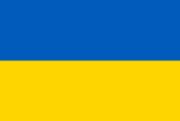Exercise Blue Ham
Intro
Exercise Blue Ham is run two or three times a year by the RAF Air Cadets (RAFAC) on the shared allocation of the 5 MHz band to facilitate their on-going training in the usage of radio. There may also be other cadet organisations taking part: Army Cadet Force (ACF), Sea Cadet Corps (SCC), and the Combined Cadet Force (CCF). The exercises allow the cadets to experience operating on HF, with all the vagaries of Near Vertical Incident Skywave (Inter-UK working), European DX, QRN, and the fun of pile-ups.
Please note: You must hold a Full UK Amateur Radio Licence to operate on the 5 MHz band. Foundation and Intermediate licence holders may only operate on 5 MHz with a Full licence holder's call-sign or a club call-sign - and under supervision of a Full licence holder. All QSO logging must be made against the Full licence holder's call-sign or club call-sign. You may not log 5 MHz QSOs with a Foundation or Intermediate call-sign. Please ensure you read and understand the licence conditions as set out by Ofcom. Failure to adhere to the licence restrictions could result in a loss of your licence and the confiscation of your equipment!
Please remember: Amateur Radio is Secondary User on the 5 MHz band, so do not be surprised when the Primary User turns up for Blue Ham weekends.
Exercise Dates
Exercise Icebreaker
Saturday 29th March 2025 from 09:00 to 18:00 UTC
and Sunday 30th March 2025 from 09:00 BST to 18:00 BST.
Upcoming: 21st and 22nd June 2025.
The methodology for the Exercises has changed. Please see the Alpha Charlie website for details.
Due to the changes to the format, the operating information this page used to hold is no longer relevant, and it has been deprecated.
Page updated: 7th February 2025
Home
|
Tips
|
Linux
|
fldigi
|
APRS
|
QSSTV
|
WSJT-X
|
Blue Ham
|
Projects
|
PSU
|
Repairs
|
Downloads
|
Links
SSTV Gallery
|
eQSL Gallery
|
MQ0PLT eQSL Gallery
|
MQ0PLT eQSL Awards



